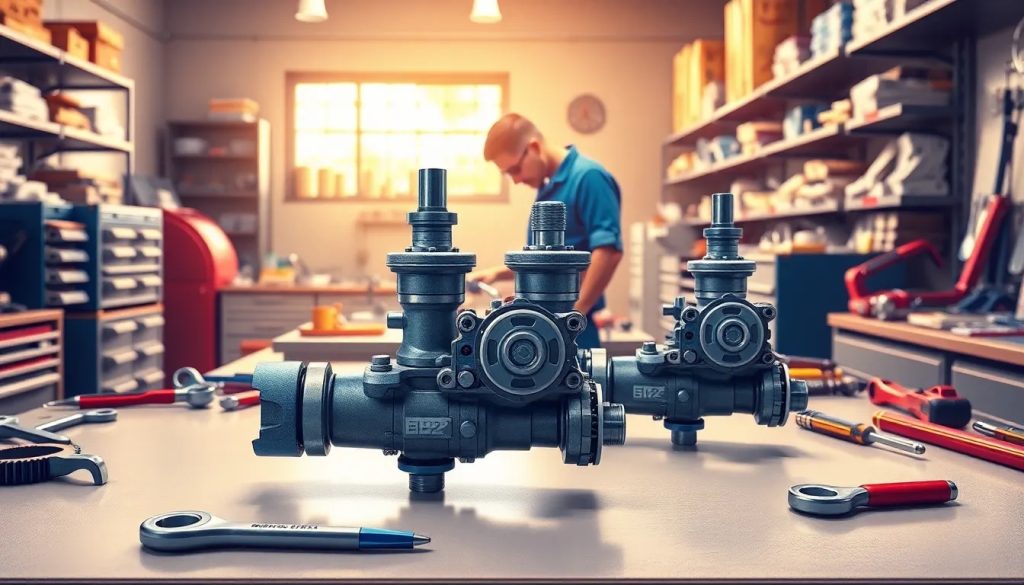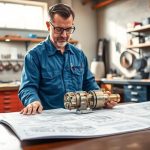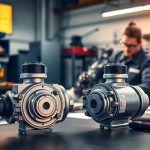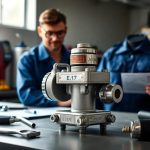Bendix E-2 & E-3 Brake Valves pdf guide

The Bendix E-2 & E-3 brake valves are critical components in modern air brake systems, ensuring optimal performance and safety in various vehicles. This article provides a comprehensive overview, including their functionality, maintenance, and troubleshooting, aiming to enhance your understanding of the Bendix E-2 & E-3 Brake Valves pdf.
Understanding these valves is essential for anyone involved in vehicle maintenance or repair. With the correct knowledge, you can ensure these components operate efficiently and effectively throughout their service life.
- How do Bendix E-2 & E-3 brake valves function?
- What are the key features of Bendix E-2 & E-3 brake valves?
- How to maintain Bendix E-2 & E-3 brake valves?
- What are the differences between Bendix E-2 & E-3 brake valves?
- What is the importance of regular maintenance for Bendix E-2 & E-3 brake valves?
- How to troubleshoot common issues with Bendix E-2 & E-3 brake valves?
- Related questions about Bendix brake valves
How do Bendix E-2 & E-3 brake valves function?
The Bendix E-2 and E-3 brake valves operate through a precise mechanism that controls air pressure within the brake system. When the driver applies force on the treadle or brake pedal, this action activates a plunger system that regulates air pressure to the brake actuators.
In the E-2 valve, the design offers a more sensitive response, while the E-3 valve necessitates a greater plunger travel. This distinction results in a notable difference in the feel and sensitivity when engaging the brakes.
Both valves are equipped with multiple ports for air supply and exhaust, which facilitates the graduated application and release of air pressure. This gradual modulation is crucial for maintaining control during braking, ensuring safety and efficiency.
Furthermore, the valves achieve a balanced position when the air pressure aligns with the mechanical force exerted by the driver’s foot, effectively halting air flow when the desired brake pressure is reached.
What are the key features of Bendix E-2 & E-3 brake valves?
The Bendix E-2 and E-3 brake valves boast several key features that enhance their functionality. These include:
- Identification Washers: These components help in identifying the specific model and facilitate maintenance.
- Insert-Type Inlet/Exhaust Valve Assembly: This design minimizes air leakage and maximizes efficiency.
- Distinct Piston Design: The E-3’s piston design requires more plunger travel, impacting sensitivity and performance.
- Multi-Port Design: Allows for effective air supply and exhaust, enhancing the braking process.
Each feature plays a significant role in the operation of the valves, contributing to their overall effectiveness in the air brake system. Regular inspection of these components is essential to ensure their longevity and performance.
How to maintain Bendix E-2 & E-3 brake valves?
Proper maintenance of the Bendix E-2 & E-3 brake valves is crucial for their optimal performance. Here are some recommended maintenance procedures:
- Regular Lubrication: Keeping the mechanical components lubricated prevents wear and tear, ensuring smooth operation.
- Inspection for Wear: Regularly check for signs of damage or wear on the valves and associated parts.
- Adherence to Warranty Policies: Certain intrusive maintenance actions may void warranties, so it's crucial to understand these policies.
- Testing Procedures: Conduct testing to ensure there are no air leaks and that the valves function correctly.
By following these maintenance guidelines, you can significantly extend the lifespan of your Bendix brake valves. Regular checks not only enhance performance but also help avoid costly repairs down the line.
What are the differences between Bendix E-2 & E-3 brake valves?
The primary differences between the Bendix E-2 and E-3 brake valves lie in their design and operational sensitivity. The E-2 is known for its more responsive nature, which allows for a quicker braking response.
In contrast, the E-3 valve features a piston design that requires greater plunger travel, resulting in a less sensitive feel. This design difference makes the E-2 better suited for applications requiring rapid response, while the E-3 may be preferred in scenarios where gradual braking is beneficial.
Additionally, the E-3 valve’s unique valve assembly can lead to variations in maintenance procedures and operational checks. Understanding these differences is essential for anyone involved in maintenance or repairs.
What is the importance of regular maintenance for Bendix E-2 & E-3 brake valves?
Regular maintenance of Bendix E-2 & E-3 brake valves is imperative for ensuring safety and performance in braking systems. Proper upkeep prevents air leaks, which can lead to malfunctions and reduced braking efficiency.
Moreover, routine inspections can uncover potential issues before they escalate into significant problems, thus saving time and costs associated with emergency repairs. This proactive approach to maintenance also enhances the operational lifespan of the valves.
Incorporating regular maintenance into your schedule helps maintain the integrity of the braking system, ensuring it operates at optimal performance levels and adheres to safety standards.
How to troubleshoot common issues with Bendix E-2 & E-3 brake valves?
Common issues with Bendix E-2 & E-3 brake valves can often be diagnosed with a systematic approach. Here are some troubleshooting steps:
- Check for Air Leaks: Inspect all connections and seals for signs of air leakage, which can affect valve performance.
- Test the Plunger System: Ensure that the plunger moves smoothly and freely, as obstructions can hinder functionality.
- Review Installation: Confirm that the valves are correctly installed, as improper installation can lead to operational issues.
In addition to these checks, listening for unusual sounds during operation can offer insights into underlying problems. Addressing these issues promptly can ensure the longevity and reliability of the Bendix brake valves.
How does a Bendix double check valve work?
A Bendix double check valve functions by maintaining pressure in both directions within a brake system. It ensures that air pressure remains consistent, preventing backflow and maintaining system integrity. This component is crucial during braking, allowing for efficient air distribution and enhancing overall safety.
What does a Bendix inversion valve do?
The Bendix inversion valve plays a pivotal role in controlling the air flow direction within the brake system. It helps in reversing the flow of air, which is essential during specific braking conditions, ensuring the brake system operates effectively under various scenarios.
What are the valves in an air brake system?
An air brake system typically consists of several key valves, including the service valve, relay valve, and governor valve. Each of these components plays a specific role in managing air pressure and ensuring that the braking system functions properly, contributing to vehicle safety.
What does a Bendix relay valve do?
The Bendix relay valve serves as a critical component that regulates air pressure within the brake system. It acts as a mediator, receiving signals from the brake pedal and adjusting the air flow to the brake chambers accordingly. This regulation is vital for achieving responsive braking performance.
 Bendix E-5 Brake Valve pdf
Bendix E-5 Brake Valve pdf Bendix E-6 & E-10 dual brake valves pdf
Bendix E-6 & E-10 dual brake valves pdf Bendix E-7 Dual Brake Valve pdf
Bendix E-7 Dual Brake Valve pdf Bendix E-8P & E-10P Dual Brake Valves pdf manual
Bendix E-8P & E-10P Dual Brake Valves pdf manualIf you want to know other articles similar to Bendix E-2 & E-3 Brake Valves pdf guide you can visit the category BENDIX.
Leave a Reply

RELATED POSTS